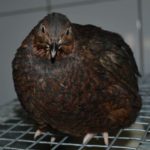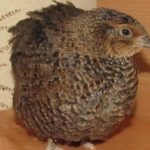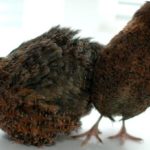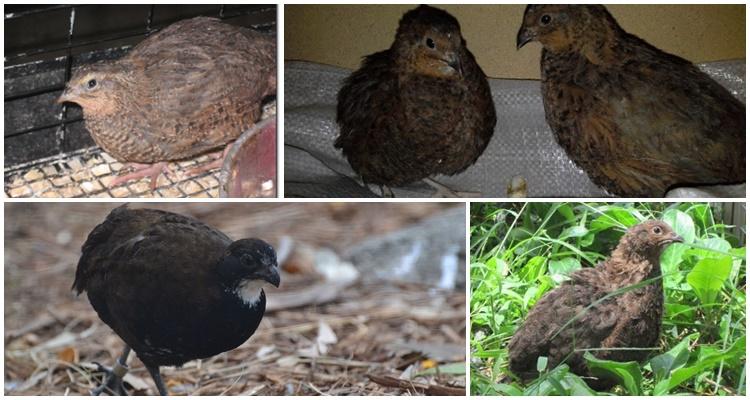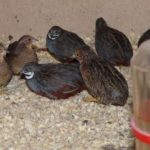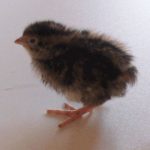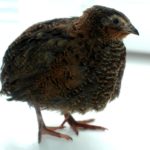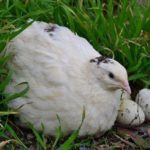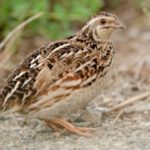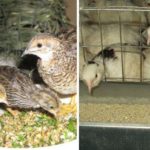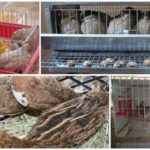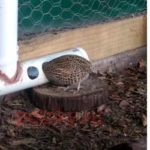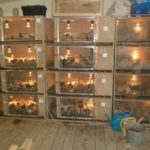Quails are small farm birds that are very easy to raise. Breeders have developed many breeds with different characteristics and productivity. Let's consider the description and characteristics of English black quails, the main advantages and disadvantages of the breed. How to keep, raise, feed and breed birds at home.
Description and characteristics of English quails
English black quails are bred from a Japanese breed and several varieties of meat. The result was a cross, the representatives of which weigh 210 g each (on average 180 g).The meat of black English quail is dark, the color remains even after cooking. Quails lay eggs well and can produce an average of 290 quails per year. eggs weighing 11 g. Females begin laying eggs at the age of 6 weeks.
The plumage color of English quails is black-brown, the beak is dark, its tip is black. The body of the birds is compact, dense, short legs, small tail. Externally, it is possible to distinguish females from males only at 2 months.
Advantages and disadvantages
Conditions of detention and care
Quails of the English breed are characterized by unpretentiousness in food and undemanding maintenance. As with other varieties of quail, it is necessary to create living conditions for the birds: temperature (15-25 °C) and humidity (60%) of the air. Quails should be kept warm all year round; if it is cold, the females will stop laying eggs. Lighting also affects the intensity of oviposition. Females lay eggs when the daylight hours are 18 hours. During short days, the room needs to be illuminated with lamps.
Due to their small size, quails can be kept in a cage. They can be placed in tiers, one on top of the other. Cages with a height of 0.3 m are suitable for this. The volume of space is calculated according to the number of livestock; at least 20 sq. m should be allocated for 1 bird. cm area. If the English quails are kept crowded, cannibalism may begin; weak birds will begin to be pecked by strong ones. In addition, livestock productivity will decrease.
For seasonal cultivation, no special equipment is required. In summer, birds can be kept outside, in an aviary. The pen must be protected from predators at the top. It is also necessary to provide protection from drafts, which birds do not tolerate well. Cold and drafts can cause an outbreak of infectious diseases.
Caring for quails consists of cleaning the cage, ventilating the room, timely feeding and watering, treating birds and cages from infections and parasites. You need to clean the cage every day, but at least once a week. Birds should not be allowed to live on dirty, wet litter where pathogens can breed.
Black English quails are not voracious; feed consumption is small - about 35 grams are needed per individual per day. stern. Feeding frequency is 3 times; if given less frequently, birds may overeat, which leads to digestive disorders. You can feed quails with compound feed if you want to get more tasty and environmentally friendly products - prepare mash from grain, grass, and root vegetables.
Breeding rules
To obtain purebred quails, you need to create families of 1 English quail and 3-4 quails. They must be kept separately from birds raised for meat and eggs. Once the fertilized eggs are collected, they are placed in an incubator. The quails themselves can also incubate, but an incubator will do a better job of hatching.
After hatching, the quail are kept in a brooder until they grow up. They are transferred to adults in a month.Birds intended for fattening are kept together, males and females in the same cage. The best ones are selected for breeding: large, active, healthy.
Diseases and pests
Diseases that poultry farmers who raise quail may encounter are infections and digestive disorders. If an infection appears on a farm, the entire livestock may die.
The best way to combat infectious diseases is preventive drinking with antibacterial and antiviral drugs.
Soldering should begin at an early age and be repeated periodically throughout cultivation. If the birds become ill, treatment must be started immediately. It is not always possible to determine the disease on your own, so it is recommended to contact a veterinarian who will prescribe antibiotics.
Parasites, both external and internal, often appear in quail farms. To prevent the occurrence of this problem, birds are treated at least once a month with anthelmintic and antiacaricidal drugs. Among the traditional methods of combating fleas and pereaters, you can use ash or sand, which is poured into a bowl and placed in a cage.
With proper management, feeding and care, raising black English quails can be a profitable business. Small birds do not need a lot of food; in return, the owner receives dietary eggs and tasty meat. For their own needs, they keep a small number of quails, and if desired, they can organize a home farm in which hundreds of these birds will be raised.

